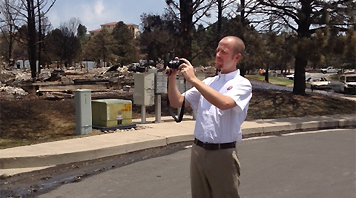|
RMIIA News Releases7951 E. Maplewood Avenue, Suite 110 Contact: Carole Walker, Executive Director Homeowners Need to Take Steps to Protect Themselves Against Heavy Snow and Ice Damage January 8, 2007 – As Colorado homeowners continue to dig out from weeks of heavy snowfall, they need to protect their property both from the damage caused by snow build up and the impact of melting snow. The most common claims being reported during the past several weeks are leaky roofs, due to ice dams building up under shingles, as well as, small building collapses due to weight of snow and ice. “While Coloradans are accustomed to dealing with their share of the white stuff, the potential damage threatened by large amounts of snowfall accumulating from three storms is unusual,” says Carole Walker, Executive Director of the Rocky Mountain Insurance Information Association. “As we face another round of forecasted weekend snow, homeowners really need to go the extra mile to protect their property.” Standard homeowner policies will cover most of the kinds of damage that result from a freeze. For example, if house pipes freeze and burst or if ice forms in gutters and causes water to back up under roof shingles and seep into the house. You would also be covered if the weight of snow or ice damages your house. If you do discover damage, make temporary repairs and keep receipts, as those costs may be reimbursed under your claim settlement. The key to preventing snow build up and melting damage is to make sure there is proper drainage:
Avoiding Frozen Pipes
### Rocky Mountain Insurance Information Association is a non-profit consumer information organization. Affiliated with the Insurance Information Institute, RMIIA has been serving consumers and the media since 1952. |
|
303-790-0216 • 800-355-9524 • Contact Us • Legal Notice, Disclaimer & Terms of Use
Home • About RMIIA • News Room • P&C Insurance Industry • Auto • Homeowners • Business • Catastrophes • Agent Resources • Events & Education • Brochures

